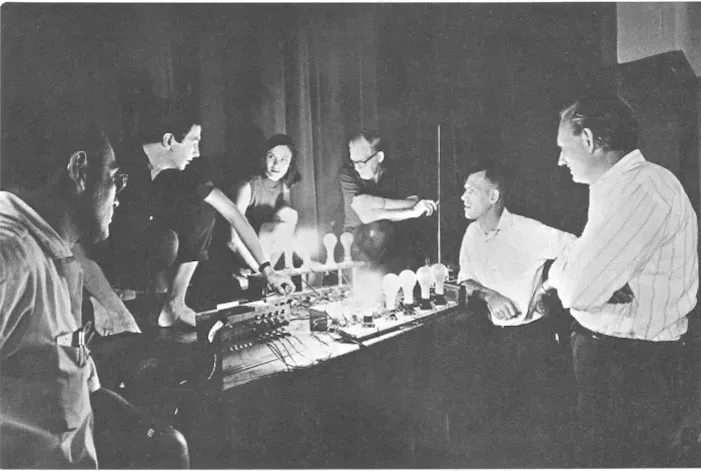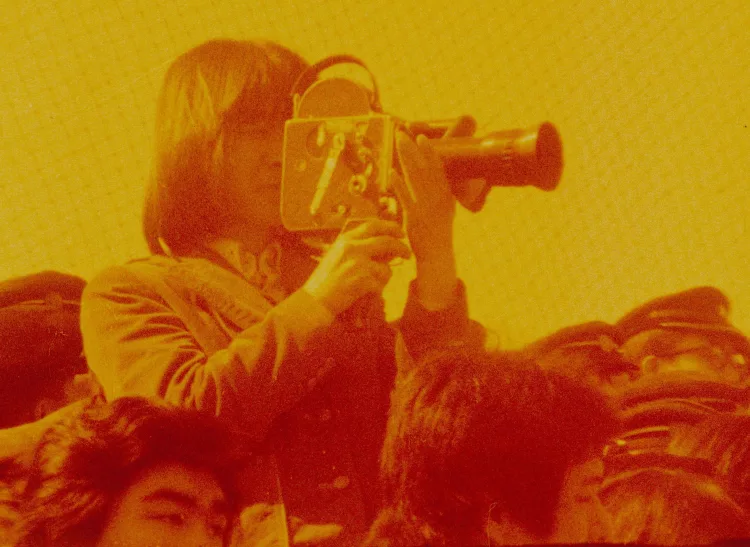Keiko Kimoto
Reinventing Image-Making, exh. cat., Tokyo: Tokyo Photographic Art Museum, 2022
→Kimoto, Keiko, Shigeki Tsuji, and Kazuyuki Aihara, “Nonlinear Dynamic Bifurcation Structures and Video Art,” Ridai Kagaku Forum: Tōkyō Rika Daigaku Kagaku Kyōyō Zasshi [Science Forum: Tokyo University of Science Journal], 27(7) (2010): 9–14
→Kimoto, Keiko, Imaginary·Numbers, Tokyo: Kousakusha, 2003
Keiko Kimoto: Velvet Order, Shouun Oriental Art, Tokyo, June 30–July 11, 2015
→Keiko Kimoto: dimension rendez-vous, art space kimura ASK?, Tokyo, March 17–26, 2011
→Imaginary·Numbers, Mika Gallery Tokyo Art Projects, New York, 2004
Japanese multimedia artist.
While working as a graphic designer, after graduating with a degree in textiles from Tama Art University, Keiko Kimoto came into contact with Apple’s Macintosh 128K in 1986. Having a penchant for drawing and valuing the importance of physicality, yet nonetheless aspiring to negate her own artistic expression, Kimoto discovered the possibilities for generating computerized images, and began making things by self-taught mathematical methods.
In the 1990s, she started to use PostScript and C, and was already exploring dynamic forms of expression from around 1997. Her early 2000s series, Imaginary·Numbers (also published as a book of the same name in 2003), drew attention to her as a media artist. The natural-looking curves and spirals were generated by making multiple calculations on a computer with a numerical formula describing nonlinear dynamics. Both abstract and organic, the drawings and shapes are rendered only in black and white, while the video has no sound, lending the works in the series a minimal appearance. At the same time, they are lush and sensual. Though the title refers to a concept in mathematics, Kimoto used an interpunct between the words, giving it a further, dyadic nuance of “imagine and number.” Kimoto has said that the significance of the series lies in how the objects do not move; rather, the space changes as a dynamic environment. To make the series, Kimoto carefully selected from the unexpected shapes generated by computer calculations, derived from certain structures and rules, and then adjusted these at a pixel level. In 2006, Kimoto was awarded Grand Prize in the Art Division of the Japan Media Arts Festival. Her work also gained attention in the field of nonlinear science, leading to her participation in the Aihara Complexity Modelling Project (2005–8) and Aihara Innovative Mathematical Modelling Project (2010–13).
Her long-term installation Ambiguous Green at NTT InterCommunication Center from 2008 to 2009 comprised Imaginary·Numbers as well as another space, featuring an experiment that combined several oscillation models from a single formula, which were run in real time. Along with finding diversity visible in nature within morphs and rhythms, changing constantly like a life form, Kimoto developed the accumulated data into multilayered and organic shapes in 2010. Kimoto exhibited work that output data onto fabric, crystal glass, and other objects at the solo shows dimension rendez-vous (2011) and Velvet Order (2015). She followed these with works in which she printed computer-generated video onto Japanese paper, which has a very distinct texture and feel, before delicately tracing them with nihonga paints made from mineral pigments. She showed these works at KENPOKU ART 2016 in Ibaraki Prefecture, along with a video generated at another venue (a science museum’s planetarium), presenting both digital and analog aspects to her practice.
At the end of the 2010s, Kimoto moved from Tokyo to a seaside area of Hiroshima, where she was born and raised, and started working with ink paintings and taking inspiration from nature. Foregrounding primary physicality and touch, her practice shifted from the digital focus of the preceding quarter-century to work that bridged the digital and analog, and then to fully analog work. The experience of using computers to seek out shapes and forms from mathematics crystallized into a nondigital iteration of her very particular style. Kimoto has called the rules that govern the universe and nature the “order of the wild,” which she spent many years pursuing through mathematics, and that focus remains unchanged even after her transition to other approaches. For Kimoto, whether the work is digital or analog, her practice is consistently rooted in a stance that prioritizes invisible environments over the visible, and that asserts the world is born of interrelations between the two. In that respect, Kimoto is less a media artist than simply an artist.
A biography produced as part of the programme “Living with two brains: Women in New Media Art, 1960s-1990s”
© Archives of Women Artists, Research and Exhibitions, 2025

















